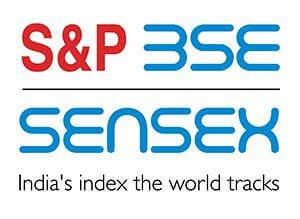S&P BSE Sensex Index Definition: What It Means for the Bombay Stock Exchange
The "Sensex" is the name of the BSE's benchmark index in India, which reflects the movements in the Indian stock market. The 30 largest and most popular equities on the BSE make up the Sensex, a barometer for the Indian economy. It is a market capitalization-weighted and float-adjusted index. In June and December, the Sensex is evaluated, making an evaluation count twice a year. The Sensex is run by Standard & Poor's (S&P) and is the oldest stock index in India; it was founded in 1986. Analysts and investors use it to track India's economic cycles, including the growth and decline of certain sectors. The Sensex debuted on January 1, 1986. It functions as a benchmark and an investable index for monitoring the performance of the 30 biggest and most stable companies in India. These businesses, some of which represent the biggest and most significant sectors of the Indian economy, are listed on the BSE (known as the Bombay Stock Exchange). It is thus India's most closely followed index. The American dollar and Indian rupee (INR) are both utilized to calculate the Sensex. The average market capitalization of the index was 3.71 trillion rupees as of August 31, 2021. The top five index components were as follows:
The methodology of the Sensex has been formed and altered by the growth of the Indian economy. Initially determined using market capitalization, it moved to a free-float capitalization method in September 2003 after being announced. It weighted the companies' influence on the index. Because it uses a company's float rather than its outstanding shares, the index removes restricted stocks that are difficult to sell, such as those held by corporate insiders. The objectives of the index have not changed despite all the methodology changes. The S&P BSE index Committee chooses its components based on several factors, including:
Background of the SensexThe BSE Sensex saw its worst-ever fall on April 18, 1992, as a result of the revelation of a scam in which a well-known broker stole money from the public banking sector to trade in equities. Since India's economy was opened to foreign trade in 1991, the index has also seen tremendous development over time. The biggest change occurred in the new millennium when it increased from about 5,000 in the early 2000s to more than 42,000 in January 2020. The primary cause of this is India's booming economy, which has been expanding for years at one of the fastest rates in the world. The development of India's middle class significantly impacts the country's growing economy and vice versa. By 2030, approximately 80% of households in the country will have medium incomes, up from around 50% in 2019. The middle class significantly influences demand from consumers. India's economic growth, nevertheless, has slowed recently and reached its worst pace in ten years in 2019. The global coronavirus pandemic epidemic that began in early 2020 has further slowed the economy and placed doubt on potential benefits. What is the process of Sensex?The 30 largest and most liquid public firms in India make up the S&P BSE Sensex index, often known as the Sensex or Sensex Index. The Bombay Stock Exchange, the biggest in India and one in the world, is where the firms that make up the Sensex are chosen from. Investors widely use the Sensex throughout the globe to gauge the overall health of the Indian economy, which has experienced rapid expansion in recent years. How is the calculation done in Sensex?The free-float capitalization approach is used to determine the value of the Sensex. This tactic is comparable to the market-capitalization weighting approach, in which businesses are weighted in accordance with their relative percentage of the index's overall market capitalization. As a result, the Sensex gives the largest firms in its index greater weight. However, unlike the market-capitalization method, the free-float capitalization technique only considers shares that are freely accessible for trading as opposed to those restricted or controlled by company insiders. How has the Sensex performed over the decades?The Sensex climbed at a cumulative rate of around 14% per year between 1986 and 2021. This surge reflects the economy of India's rapid expansion during the period, especially the emergence of its middle class. The Sensex dropped by roughly 40% during the coronavirus health crisis in March 2020, but it recovered strongly for the remainder of the year. Sensex reached a new record level in February 2021.
Next TopicService Sector
|
 For Videos Join Our Youtube Channel: Join Now
For Videos Join Our Youtube Channel: Join Now
Feedback
- Send your Feedback to [email protected]
Help Others, Please Share










